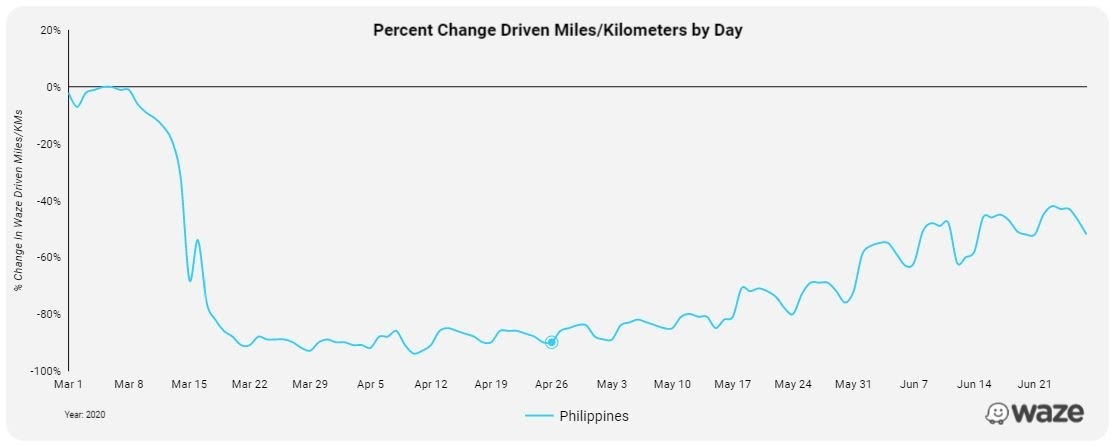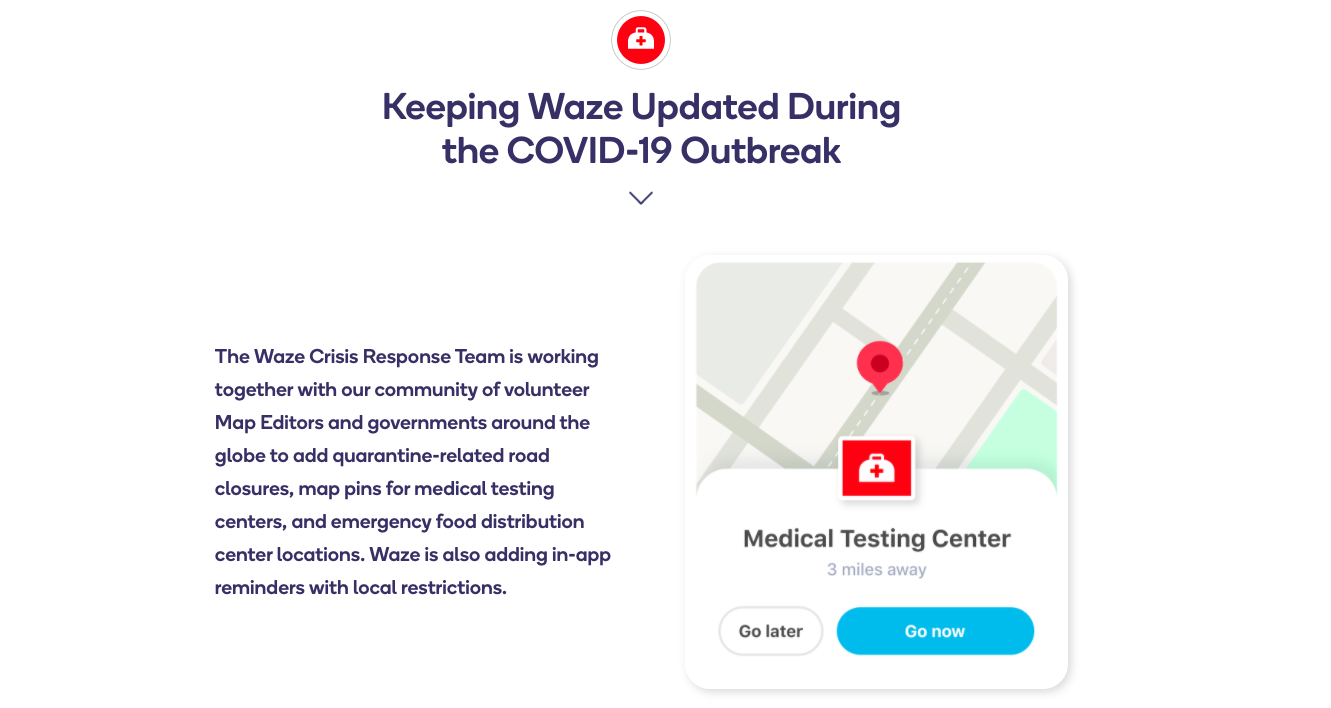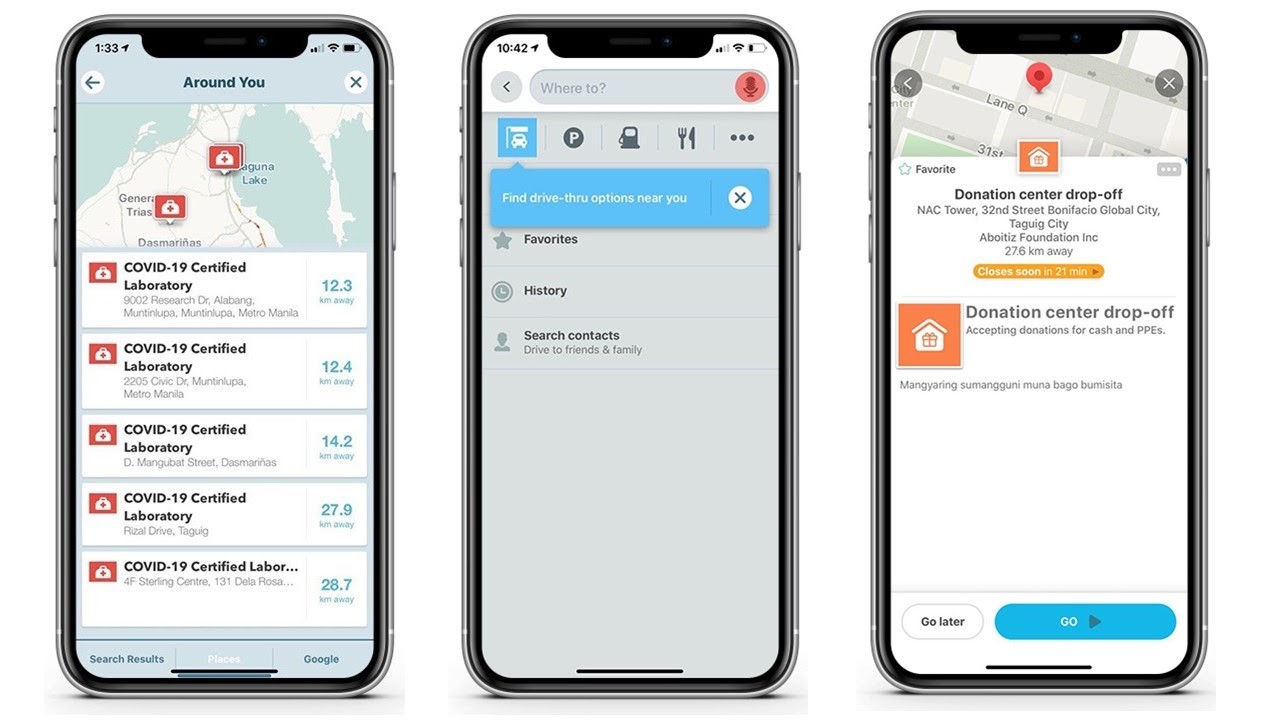SINGAPORE — What started as a small outbreak in a city quickly spread across the globe. Within weeks, hundreds of thousands were infected with COVID-19, causing the World Health Organization (WHO) to declare a Public Health Emergency of International Concern, and later on a pandemic.
This set a flurry of events into motion: countries rushed to close their borders, governments clamped down on local movement, and people stayed home — all in a bid to contain the outbreak.
With the tight movement restriction measures in place, here at Waze, we saw traffic dwindle to a trickle. In fact, our data indicated that globally, Waze users were driving 60-percent fewer miles compared to the February daily average for a two-week period.

As strange as this sounds, we saw for the first time that in most places, our users were not rushing to beat the morning rush hour or dropping by the gas station on the way back home from work.
Despite the overall decrease in the number of people on the road, we noticed that there were still essential journeys that needed to be made every day. Personally, I drove out once a week to get groceries and I know some friends who needed to go to the hospital to get their regular treatments. Just like me, our users were still driving on the road but with a lot less frequency and number of distance travelled.
From that point on, we saw the opportunity to help users plan their drives more effectively. But we knew that we could not do this on our own.
While our data helped us to better understand the impact of COVID-19 on traffic patterns all over the world, it was our community and partners who helped us identify — and input — the kinds of information that would be most useful on our maps.
Community response
As the COVID-19 outbreak continued to spread around the world, our passionate community sprang into action almost immediately to support over 70 countries — and counting — with region-specific relief efforts.

Working closely with the Waze Crisis Response team, they helped to ensure that Waze maps stayed up to date with road closures, red zones, testing center locations so that drivers can safely get where they need to.
For example, in the Philippines, the community successfully pinned 85 reference laboratories as of date to inform users of nearby COVID-19 testing center locations. By doing so, suspected individuals with the virus can head to the appropriate medical center and receive treatment.

We are also heartened to see many Filipinos helping one another within their communities in times of crisis. Waze hopes to encourage individuals to continue giving back by plotting donation centers on the map, with users being able to search for the nearest drop-off center to contribute essential items like food, clothing or medical supplies.
Support for businesses, policymakers
We also wanted to help business, especially those in the restaurant sector that were struggling to stay open in the wake of the COVID-19 crisis.
Understanding their needs, Waze quickly rolled out new services to allow businesses to more visibly indicate if they are offering contact-free curbside pick-up and takeout.
This, in turn, helped companies — many of which are small, independent businesses — to continue operating during the outbreak. Drivers can easily search, filter and navigate to these locations while remaining compliant with social distancing guidelines.
In an effort to bring even more useful information to users, we also reached out to our Waze for Cities partners for critical information.
We broadened our network and called upon governments around the world to share information on our COVID-19 landing page at www.waze.com/covid19.
This site allows local governments to upload the crucial information residents need around road closures, medical testing centers, and more onto our maps.
As part of Waze’s response and recovery efforts, we also made our COVID-19 impact dashboard available externally so that governments, academics and interested members of the public can gain more insight into local driving trends on either a country or city level.
Overall, these initiatives helped both Waze users and businesses navigate these challenging times safely.
“ Mobility as we knew it has also changed indefinitely. The world we’re returning to isn’t the world we were once familiar with — it’s a “new normal” that brings with it a perpetual change in how we move around our cities. ”
‘New Mobility Normal’
Across the world, countries are now slowly beginning to lift their lockdown measures. As we readjust to our lifestyles pre-COVID-19, there are many valuable lessons that we can glean from this experience and carry forward to the future.
More than anything, the pandemic has shown us the importance of treating others with empathy and compassion. Here at Waze, people are at the heart of all our marketing efforts, especially during these hard times.
“ We’re seeing predictions that those who can afford to will buy cars to replace their previous mode of commute, resulting in an influx of vehicles — and thus traffic — on the road. ”
Post-COVID-19, we will continue to work closely with the community when introducing or marketing new product features. It is imperative that we understand the needs and circumstances of our users, and thoughtfully engage with them in order to create features that are both relevant and useful.
Beyond that, mobility as we knew it has also changed indefinitely. The world we’re returning to isn’t the world we were once familiar with — it’s a “new normal” that brings with it a perpetual change in how we move around our cities.
Particularly in the early stages of the lockdown lift, people are warier of public transportation due to the challenges it presents for social distancing. We’re seeing predictions that those who can afford to will buy cars to replace their previous mode of commute, resulting in an influx of vehicles — and thus traffic — on the road.
In a short span of six months, the COVID-19 pandemic has transformed almost every aspect of our lives, including the way we travel.
After months of staying home and only traveling out for essential needs, governments, businesses and individuals across the world are now beginning to prepare for the next phase of recovery.
By making contributions like helping cities reconfigure to accommodate new mobility patterns, Waze hopes to continue contributing positively to the move towards the future.
Portrait photo courtesy of Life at Gojek YouTube (GO-JEK x APMF 2018 "Waze Addressing Mobility Issues in the Region"
Edited by Janvic Mateo


